Mas y Mas
Raúl Niño , author of
Book of Mornings will be appearing at:
Rudy Lozano Branch Library, 22 August at 7:00PM
1805 South Loomis Street
Chicago, Il 60608
312-746-4329
Please come and enjoy the readings, and diversity of Chicago neighborhoods.
And also.....
In preparation for City of Austin's Mexican American
Cultural Center's grand opening September 15, 2007,
The Public is invited to a MEET AND GREET Sneak
Preview featuring--
AMORINDIO:
Tributo y Celebracion forraulrsalinas/Fundraiser for Red Salmon Arts: Join usto honor and celebrate the life of Austin's elder
Xicanindio poet/human rights activist. A veterano of
Chicano literature/letters, raulrsalinas' writing and
activism have earned him international recognition as
a spokesperson for a diversity of political causes,
ranging from prisoner rights and national liberation
struggles to gang intervention and youth arts
advocacy.
raulrsalinas is the author of three collections of
poetry: Un Trip Thru the Mind Jail y Otras Excursions
(Editorial Pocho-Che, 1980; Arte Publico Press, 1999),
East of the Freeway: Reflections de mi pueblo (Red
Salmon Press, 1995), and Indio Trails: A Xicano
Odyssey thru Indian Country (Wings Press, 2006).
Recently, UT Press published a selected collection of
his prison wirtings, raulrsalinas and the Jail
Machine: My Weapon Is My Pen (edited by Louis Mendoza,
2006).
The tribute will feature performances and
presentations by renowned Chicana/o and Latina/o
writers and scholars:
Miguel Algarin (NYC),
SandraCisneros (San Antonio),
Carmen Tafolla (San Antonio),
Norma E. Cantu (San Antonio),
Alejandro Murguia (San
Francisco),
Rosemary Catacalos (San Antonio),
sharonbridgforth (Austin),
Roberto Vargas (San Antonio),
Tammy Gomez (Fort Worth),
Celeste Guzman Mendoza(Austin),
Levi Romero (Albuquerque, NM),
Tony Spiller(NYC),
Jessica Torres (San Antonio).
Presenters on raulrsalinas' life include:
AntoniaCastaneda (San Antonio),
Roberto Maestas (Seattle,
WA), and Alan Eladio Gomez (Ithaca, NY). There will
be an opening ceremony by
Danzantes Concheros y musica
movimiento Chicano by
Conjunto Aztlan.
The celebracion will also include a Silent Art
Auction, curated by Chicana artist Jane Madrigal, with
over 30 pieces by artists throughout the Southwest,
and food and refreshments provided by Alma de Mujer
Catering Dept.
All proceeds will support
Red Salmon Arts, a Native
American/Chicana/o based cultural arts organization
with a history of working within the indigenous
communities of Austin since 1983. This event is
sponsored by
Red Salmon Arts, Alma de Mujer, PODER,
and UT Press. $10 dollar suggested donation.
Saturday, August 25, 2pm - 7pm.Mexican American CulturalCenter, 600 River Street.For more info:512-416-8885/ [email protected].Donation: Please send to Red Salmon Arts, 1801-A South
First St., Austin, TX 78704 Austin, TX.
For tax-deductible contributions, please contact Rene
Valdez first at
[email protected]Bios for Performers:
Miguel Algarin (NYC) is the "poet laureate" of the
Lower East Side - and founder of the Nuyorican Poets
Cafe in New York City, where he has nurtured the
spoken and written word for nearly three decades.
Sandra Cisneros (San Antonio) is an American novelist,
short-story writer, essayist, and poet, whose works
helped bring the perspective of Chicana women into the
literary mainstream. Author of House on Mango Street,
Loose Woman, and Caramelo, among other works.
President and Founder of the Macondo Foundation.
Carmen Tafolla (San Antonio) is an internationally
acclaimed writer and regarded as one of the masters of
poetic code-switching. She often employs the
bilingual idiom of her native San Antonio’s Westside
in her poems. Author of various works, including
Sonnets to Human Beings, Sonnets and Salsa, and
Curandera.
Rosemary Catacalos (San Antonio) is the author of
Again for the First Time (Tooth of Time Books, Santa
Fe, 1984). A past Dobie Paisano Fellow, Stegner
Creative Writing Fellow, and the recipient of an NEA
grant, she has been the Executive Director of Gemini
Ink since 2003.
Norma E. Cantu (San Antonio) currently serves as
professor of English at the University of Texas at San
Antonio. She is the author of the award-winning
Canicula Snapshots of a Girlhood en la Frontera, and
co-editor of Chicana Traditions: Continuity and
Change.
Alejandro Murguia (San Francisco) is is a two-time
winner of the American Book Award, most recently for
This War Called Love: Nine Stories, City Lights Books.
His memoir The Medicine of Memory: A Mexica Clan in
California, University of Texas Press, has been
nominated for the Victor Turner Prize in Ethnographic
Writing.
sharon bridgforth (Austin) is the Lambda Award winning
author of the bull-jean stories (RedBone Press), and
love conjure/blues a performance/novel (RedBone
Press). Bridgforth has broken ground in the creation
and presentation of the performance/novel and in doing
so has advanced the articulation of the Jazz aesthetic
as it lives in theatre.
Roberto Vargas (San Antonio) is a community/labor
organizer and author of two poetry collections:
Primeros Cantos and Nicaragua, yo te canto besos,
balas y sueños libertad. He was a founding member of
The Pocho Che Collective, a loose coalition of writers
who published some of the first books of the
contemporary Latino literary renaissance taking place
in San Franisco.
Tammy Gomez (Fort Worth) is a native Texas writer and
performance poet, is featured in the PBS documentary
"Voices from Texas." She has published the work of
Yoniverse, a women's poetry group she founded, in the
anthology In a Loud Kitchen (Tejana Tongue Press,
1998); a second anthology, North Texas Neruda Love,
published by Tejana Tongue Press, was released in
January 2006.
Levi Romero (Albuquerque, NM) is an Embudo Valley poet
& author of In the Gathering of Silence (West End
Press).
Celeste Guzman Mendoza (Austin) is a San Antonio
native. Her poetry has appeared in journals such as
Salamander, Poet Lore, and 5 a.m., and in various
anthologies, including Telling Tongues, Red Boots and
Attitude, and Floricanto Si. She won the Poesia Tejana
Prize in 1999 from Wings Press for her chapbook of
poems, Cande te estoy llamando.
Jessica Torres (San Antonio) is a youth filmmaker,
activist, visual artist, and singer/musician. Her
short film, Los Punkeros, Chicano punk rock movement
with a twist of Conjunto, appeared on San Anto TV, a
TV Magazine produced by local youth through the San
Anto Cultural Arts Multi Media Institute (SAMMI).
Bios for presenters:
Antonia Castaneda (San Antonio) is a Chicana feminist
historian, teaches in the Department of History at St.
Mary's University. Her research and teaching interests
focus on gender, sexuality, and women of color in
California and the Borderlands from the 16th century
to the present.
Roberto Maestas (Seattle, WA) is the co-founder and
Executive Director of El Centro de la Raza, a center
for Seattle’s Latino Community. He has long been
involved in the ongoing struggle for civil rights in
the city.
Alan Eladio Gomez (Ithaca, NY) earned a Ph.D. in
History and an M.A. in Latin American Studies from the
University of Texas at Austin. A community organizer,
scholar, and radio journalist, Gómez studies post WWII
social movements involving multiracial and
transnational alliances of U.S. Third World peoples,
prison rebellions, political theater, and Latin
American revolutionary movements.
Bio for Conjunto Aztlan:
Conjunto Aztlan (Austin) represents a spiritual and
musical journey expressed through poetry and song.
The Conjunto was born of the Xicano Movement in
Austin, Texas, in 1977. Their purpose is to
celebrate, defend, and expand the musical, cultural,
and spiritual legacy of the Chicano people.











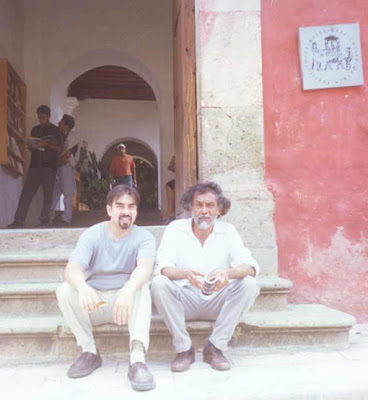

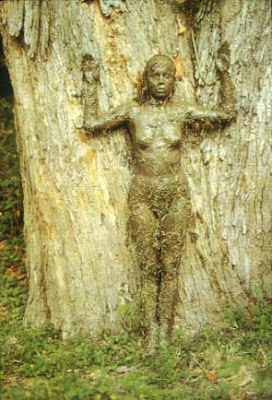
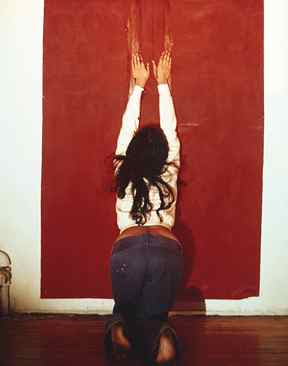
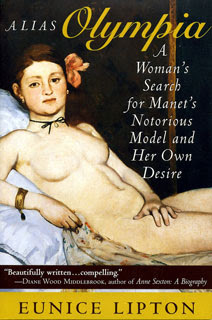
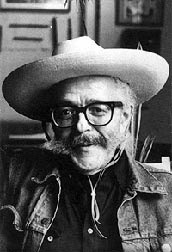
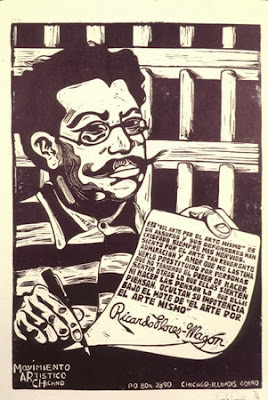
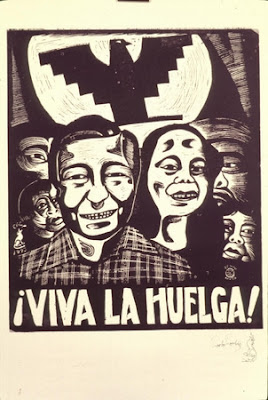
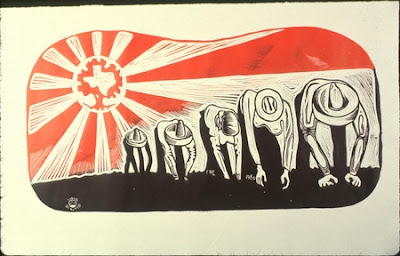
De La Torre is the splitting image of someone I know. Cool Blog - nice to see the Xicano community in Chicago is thriving.